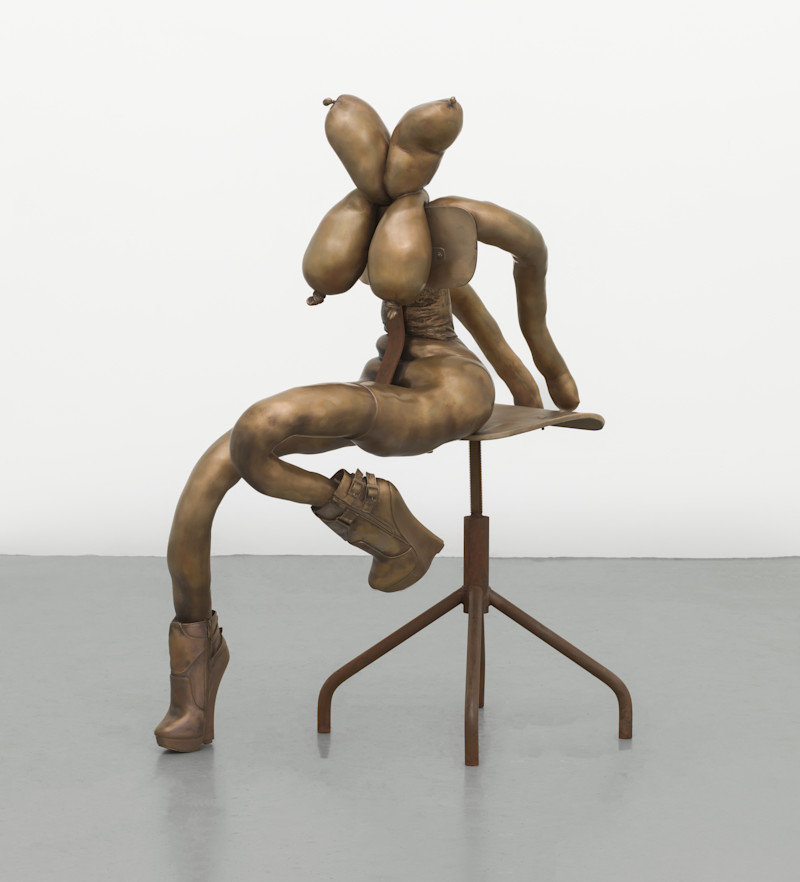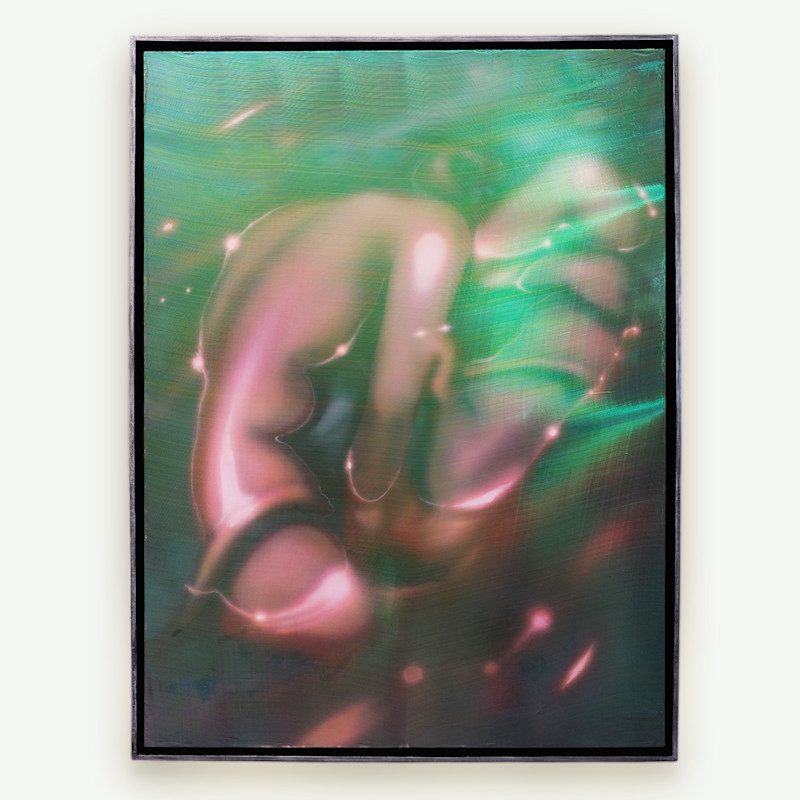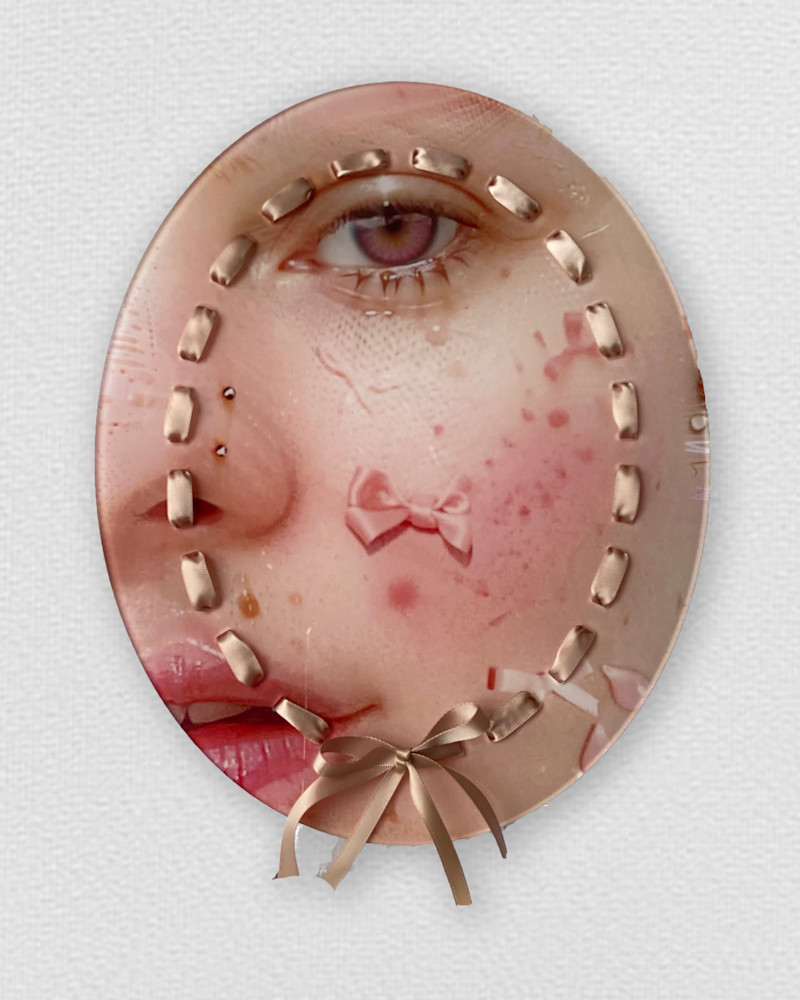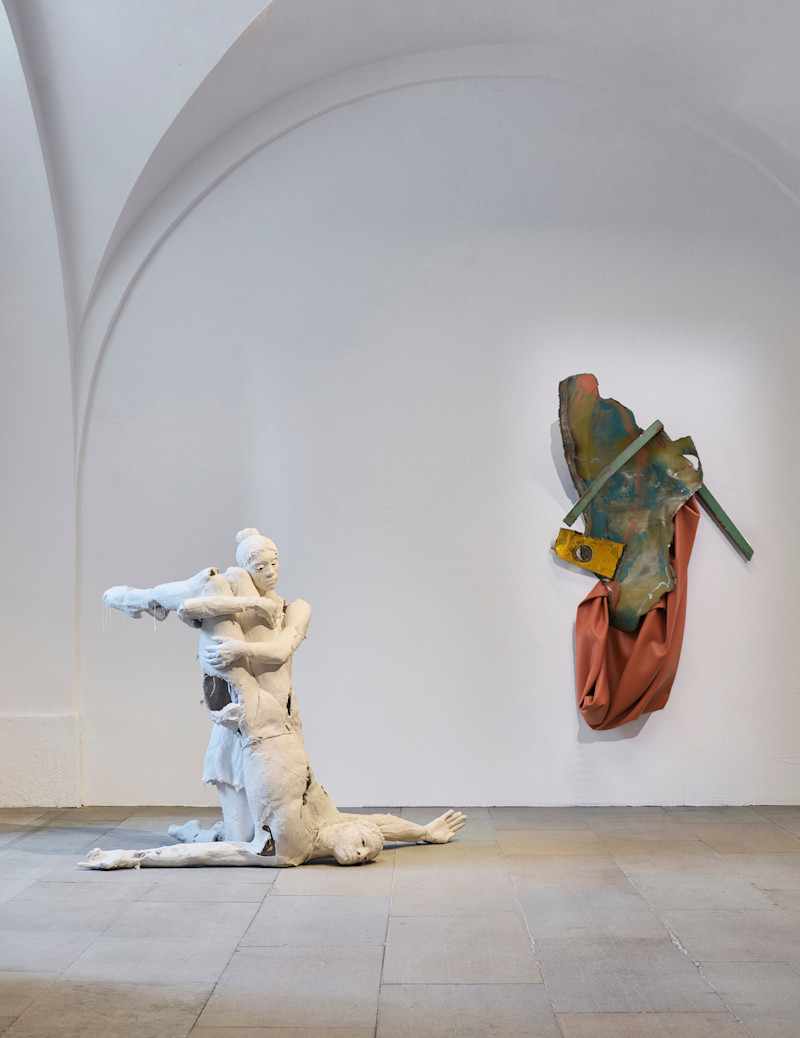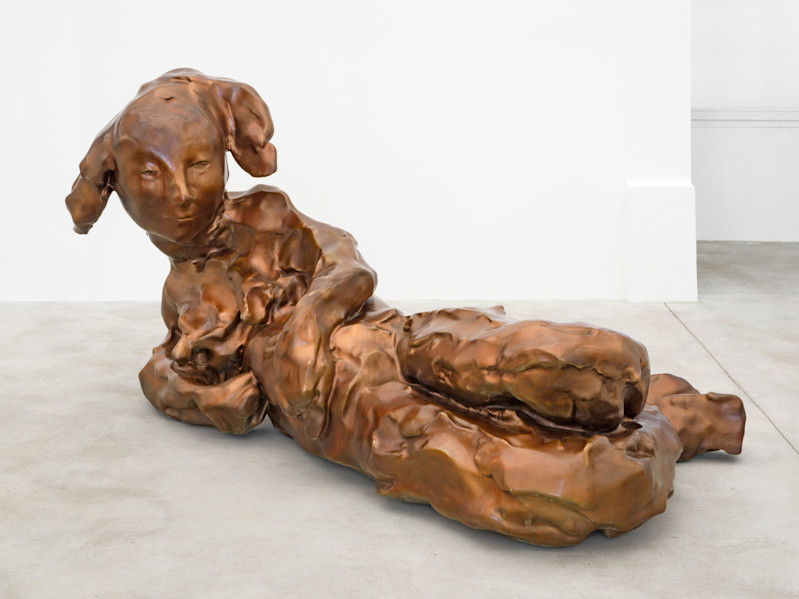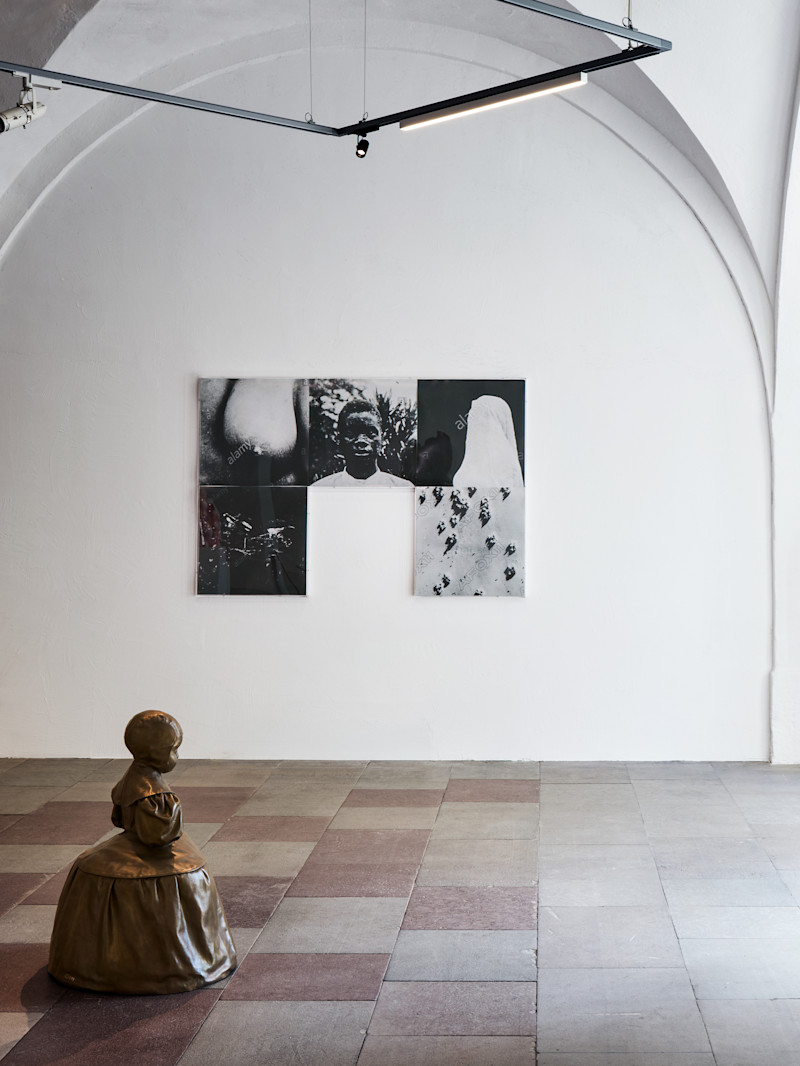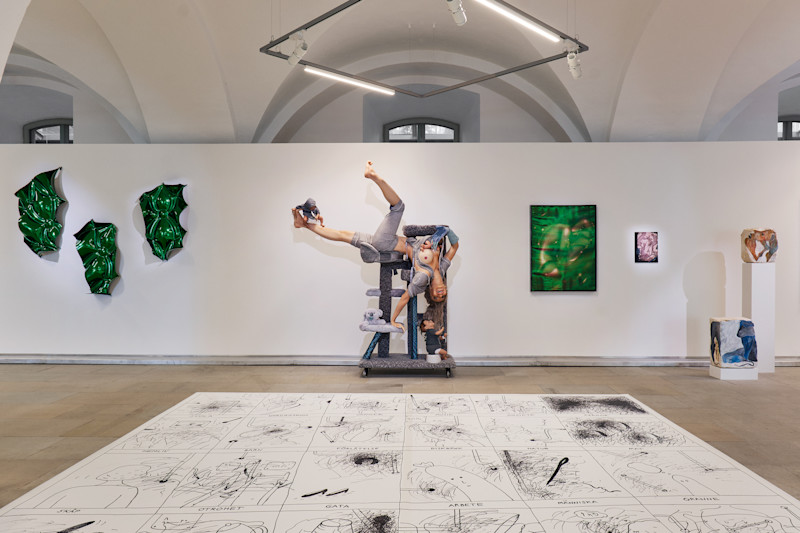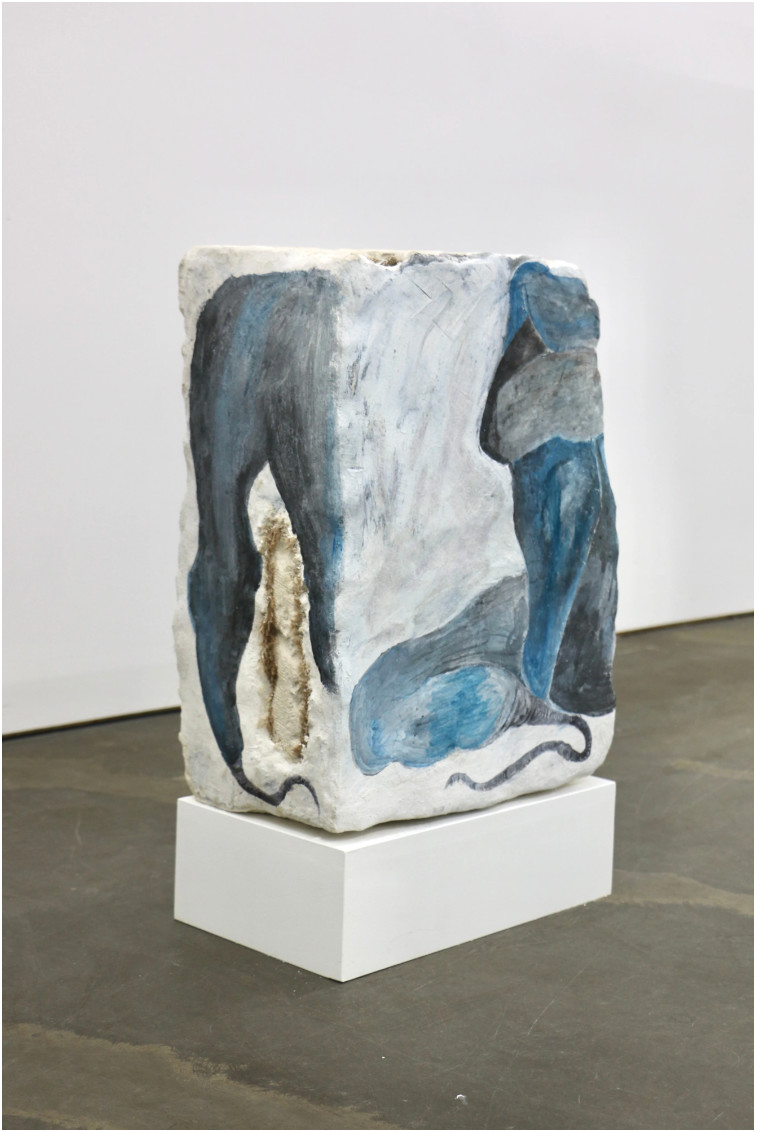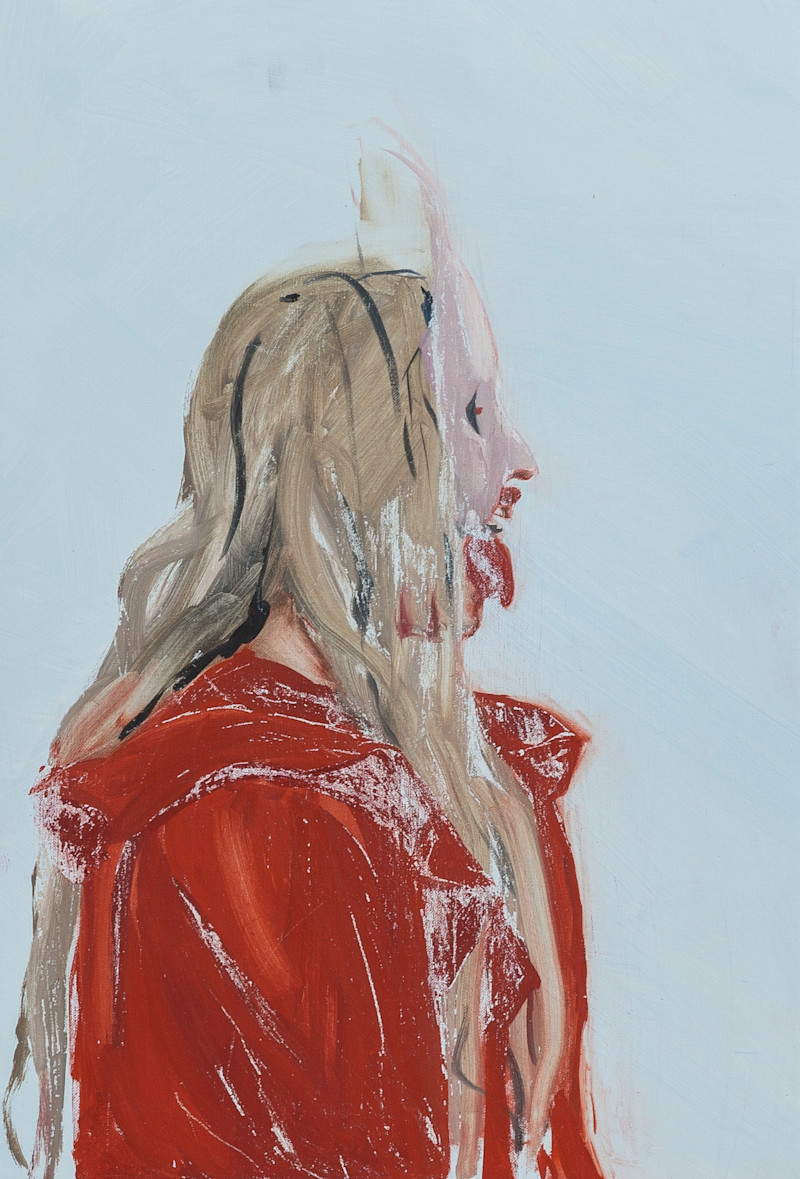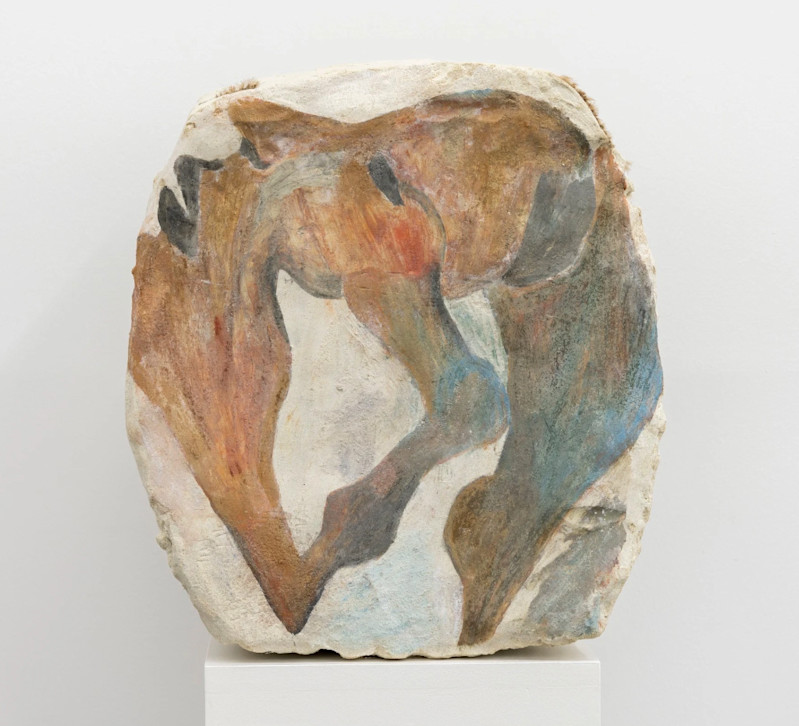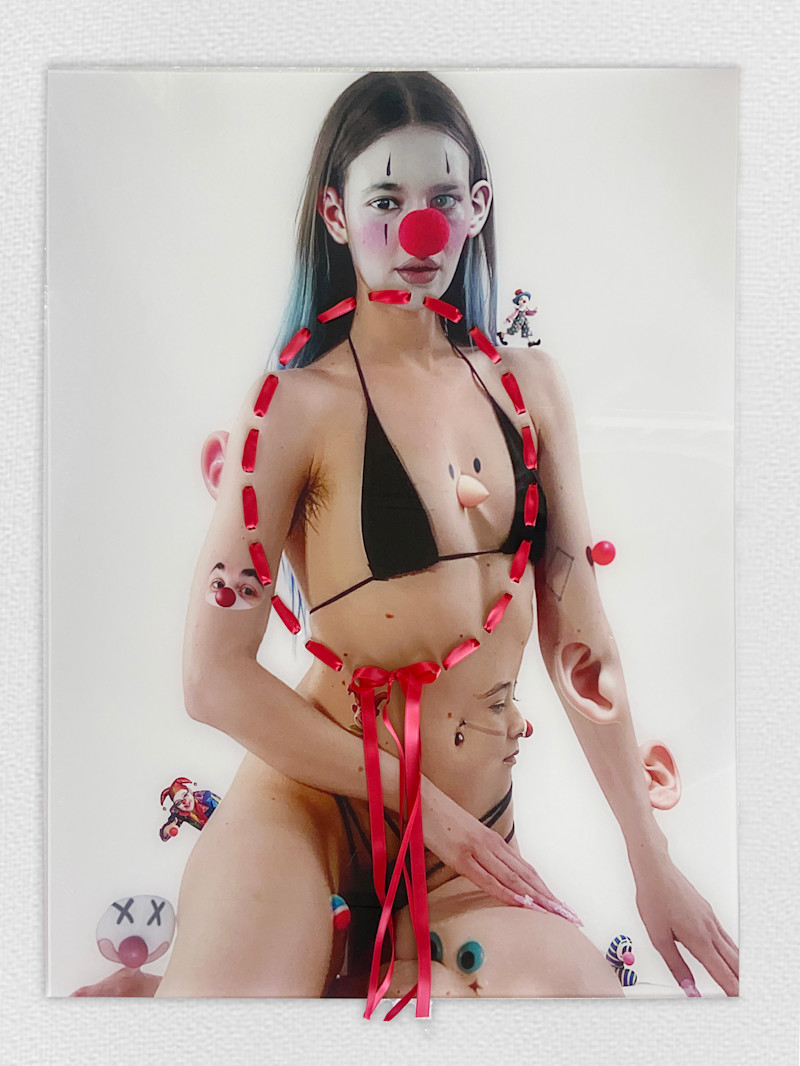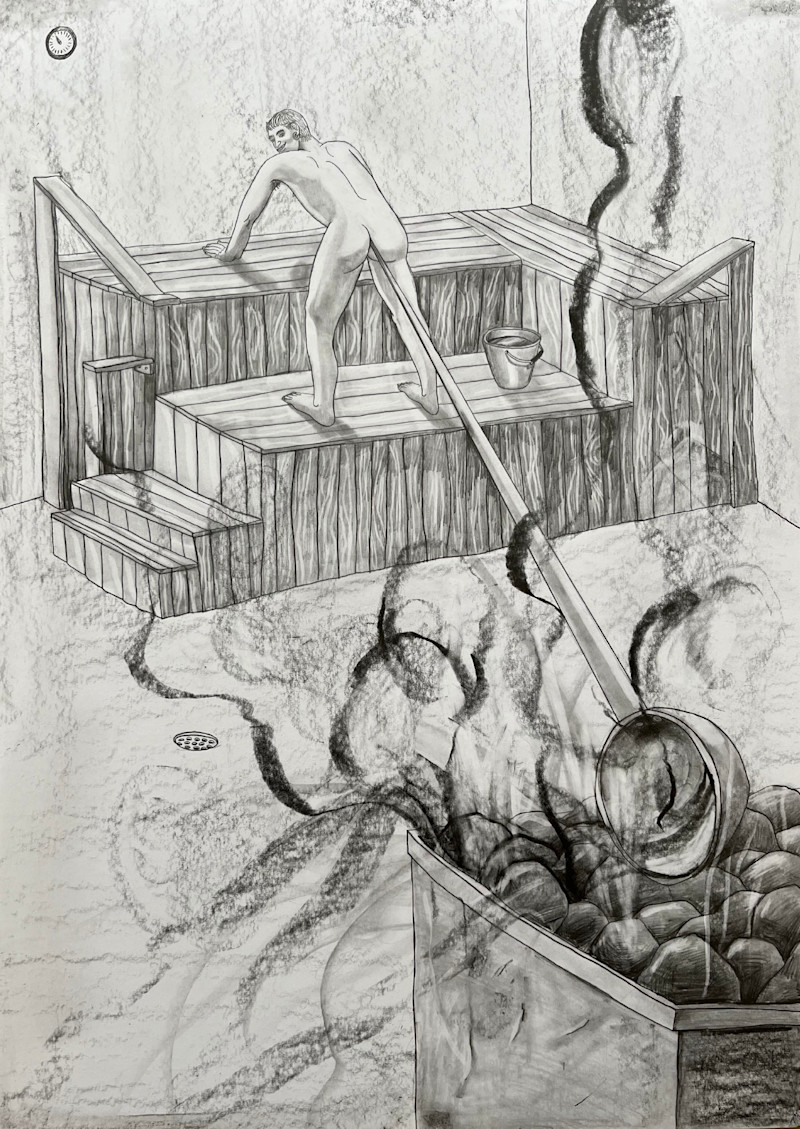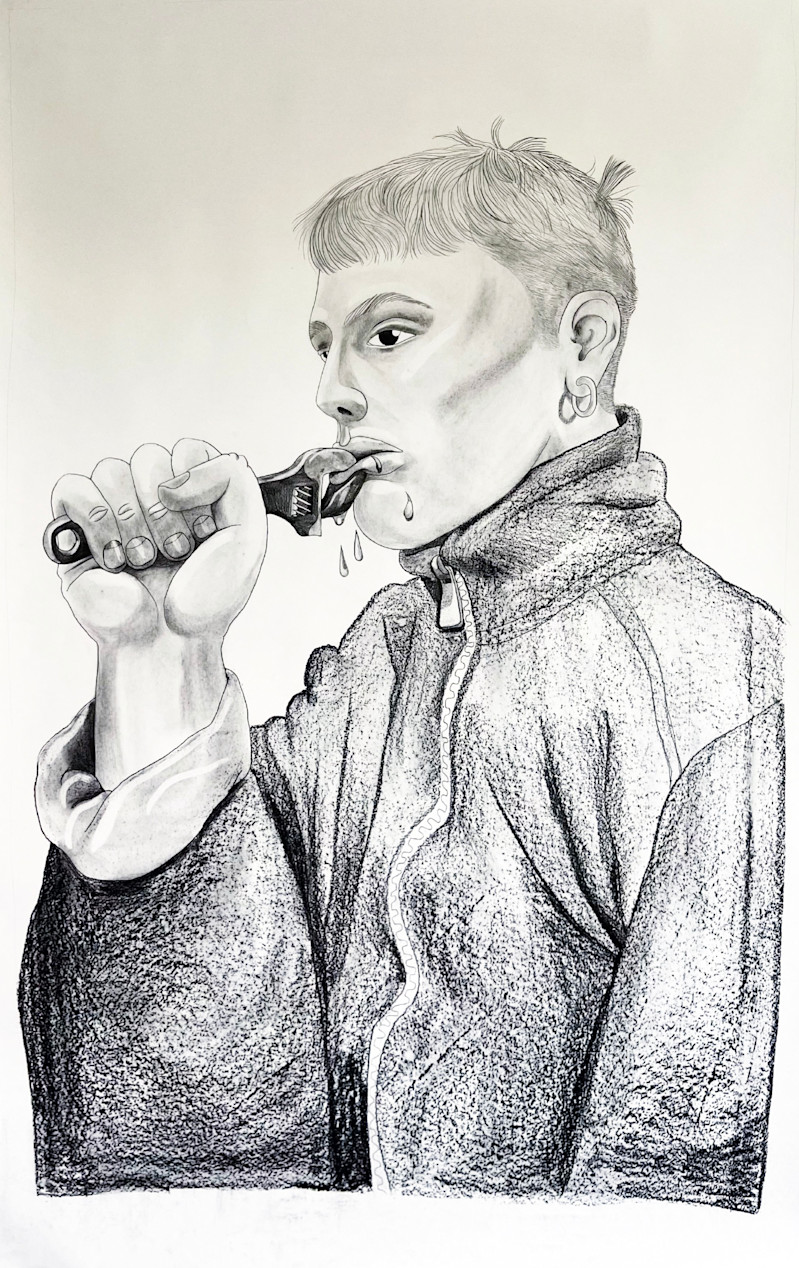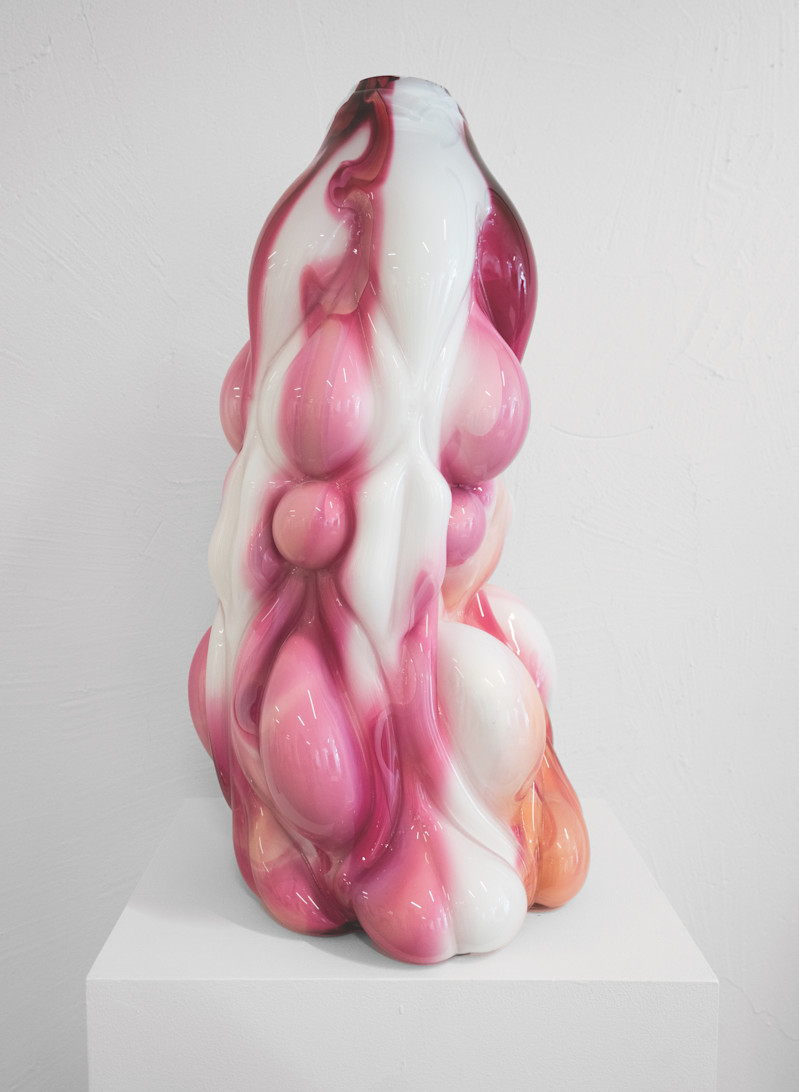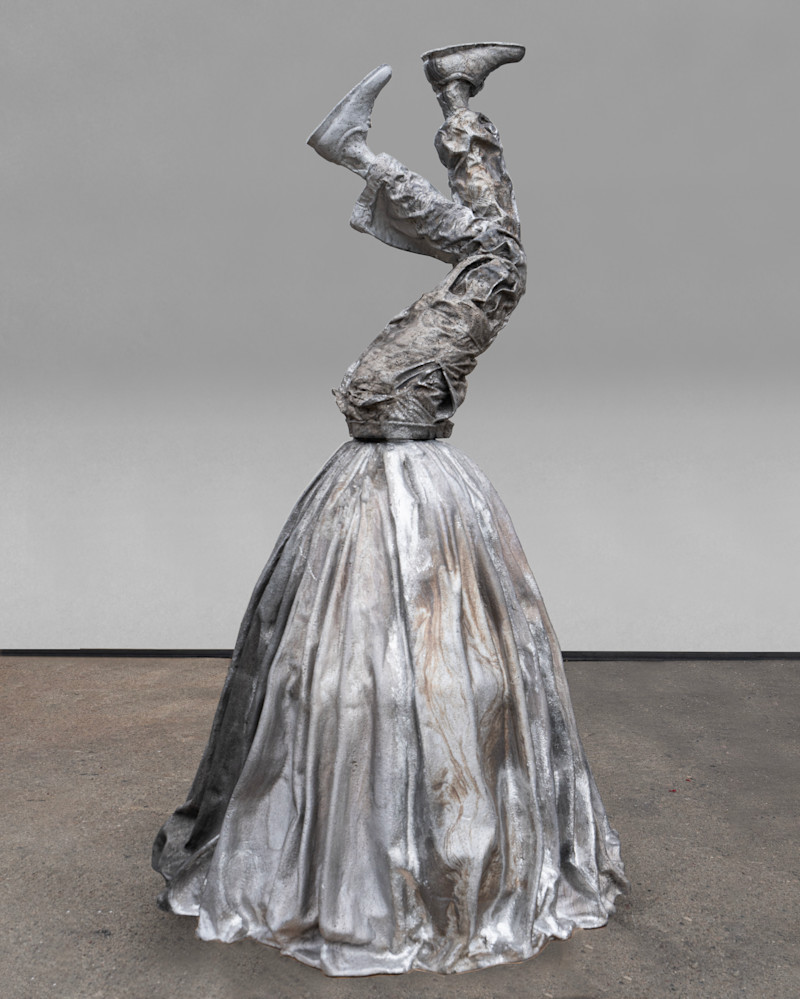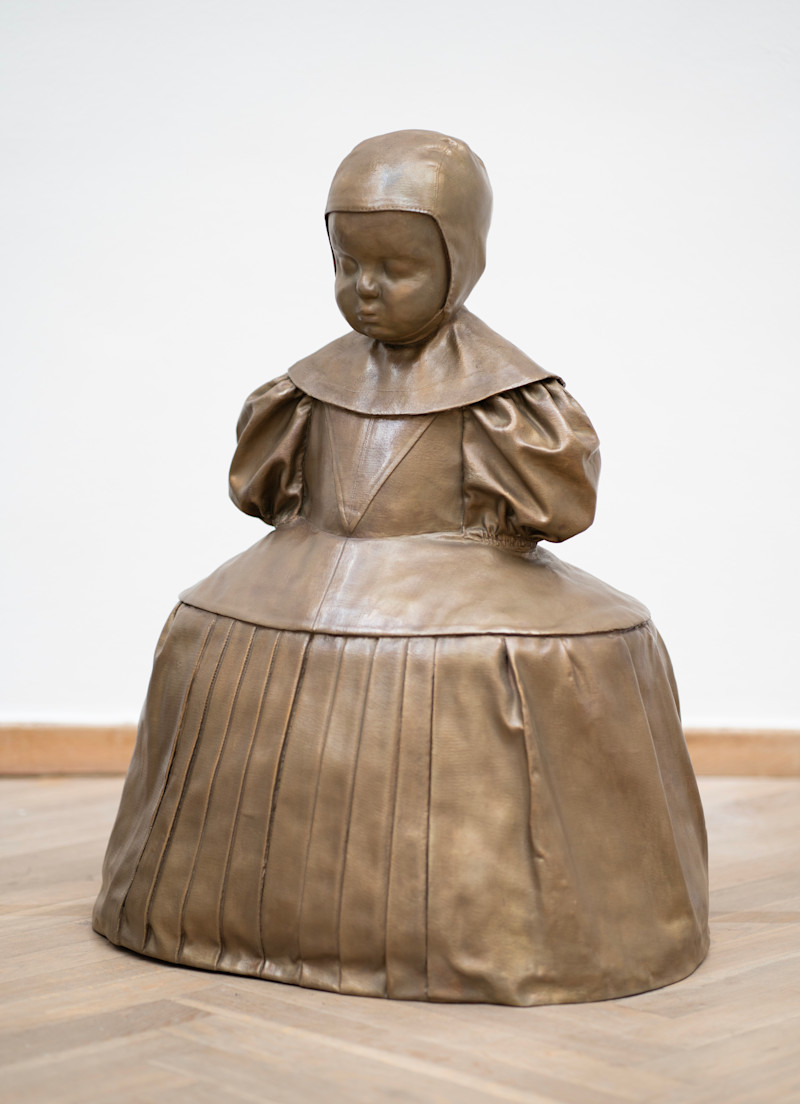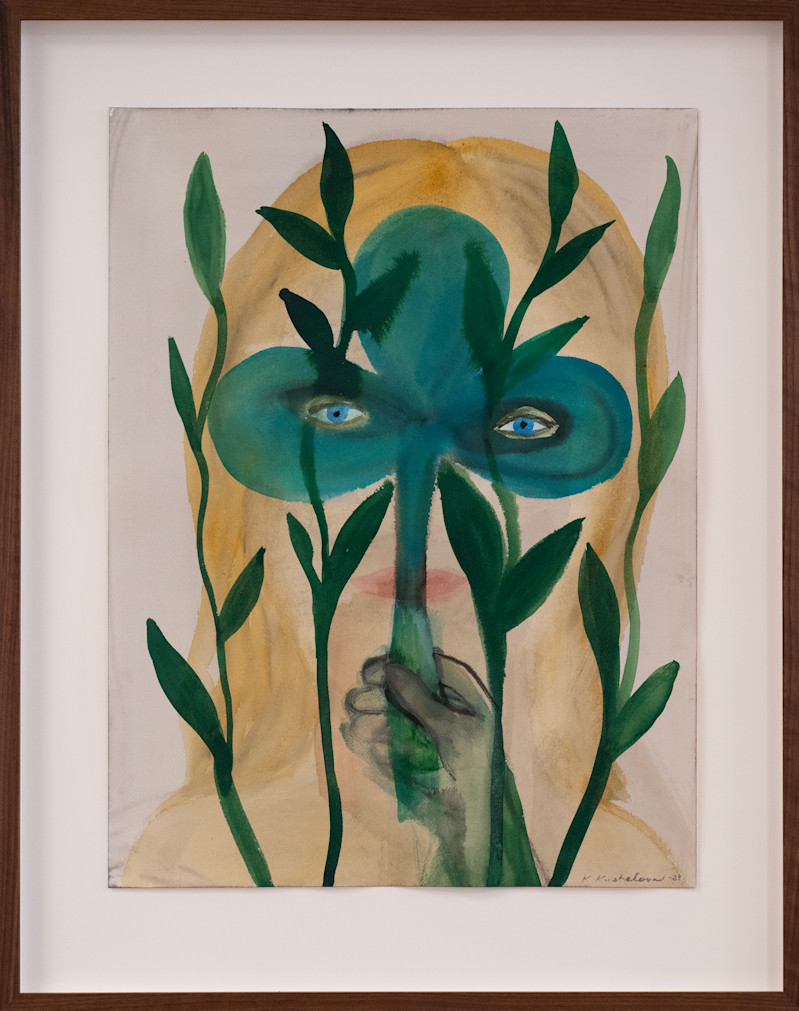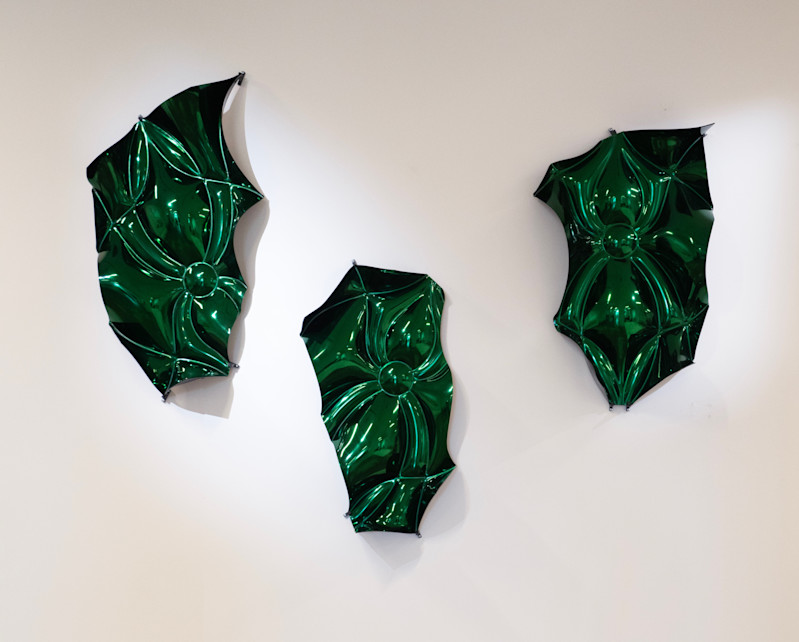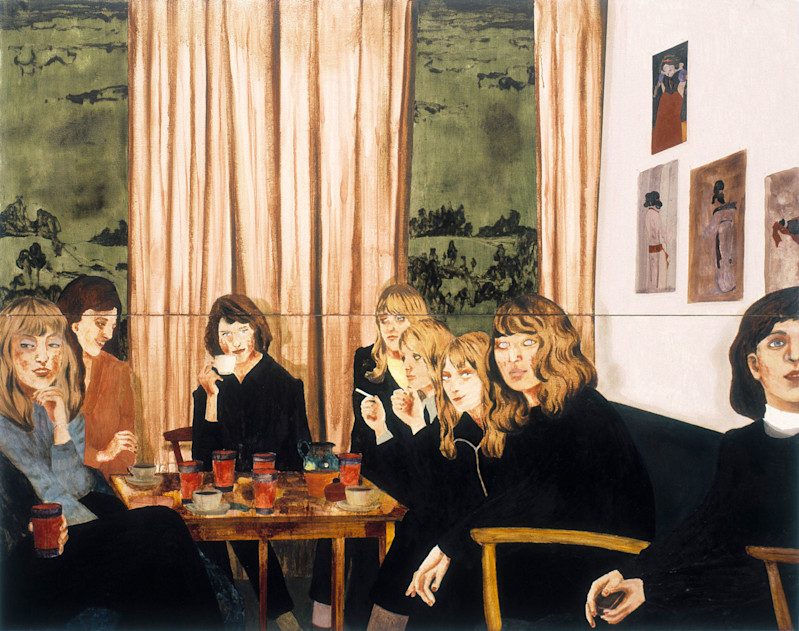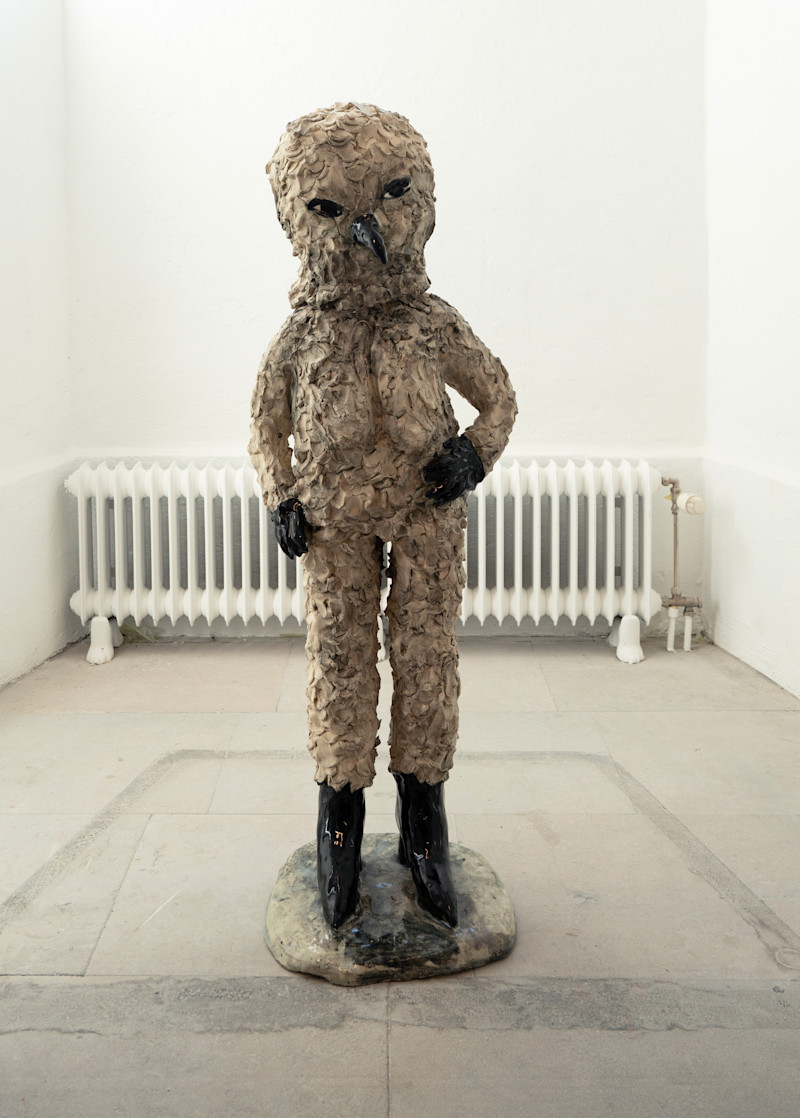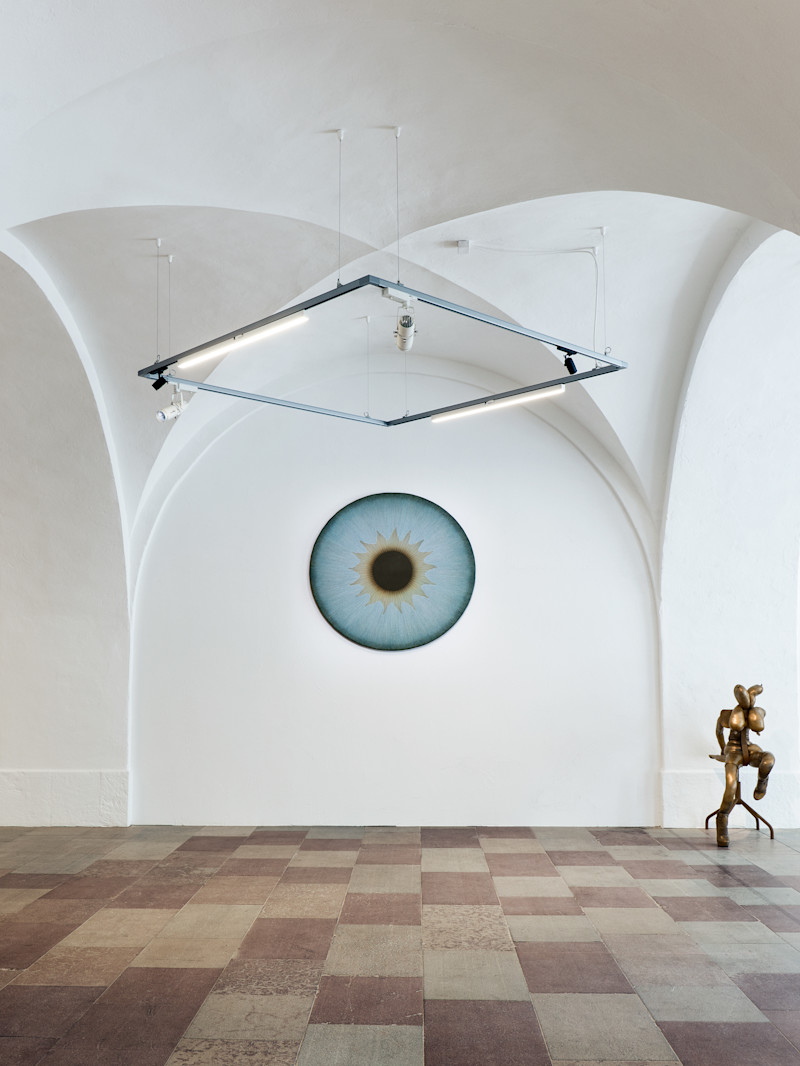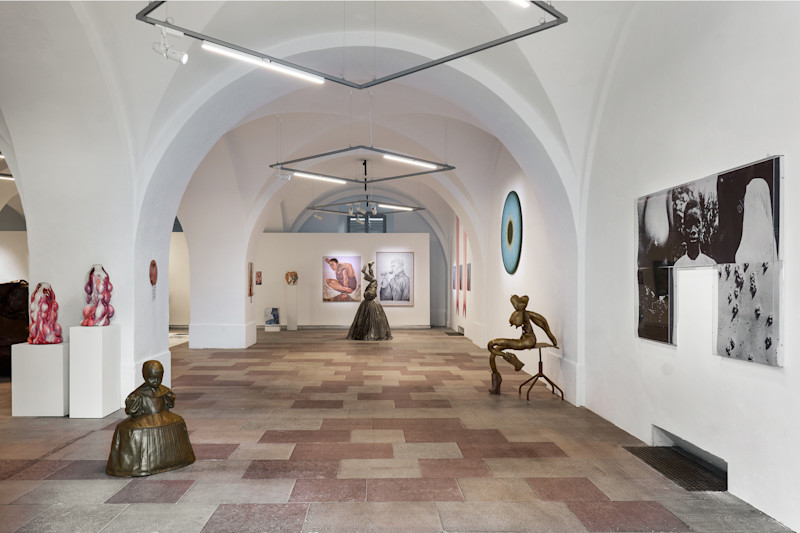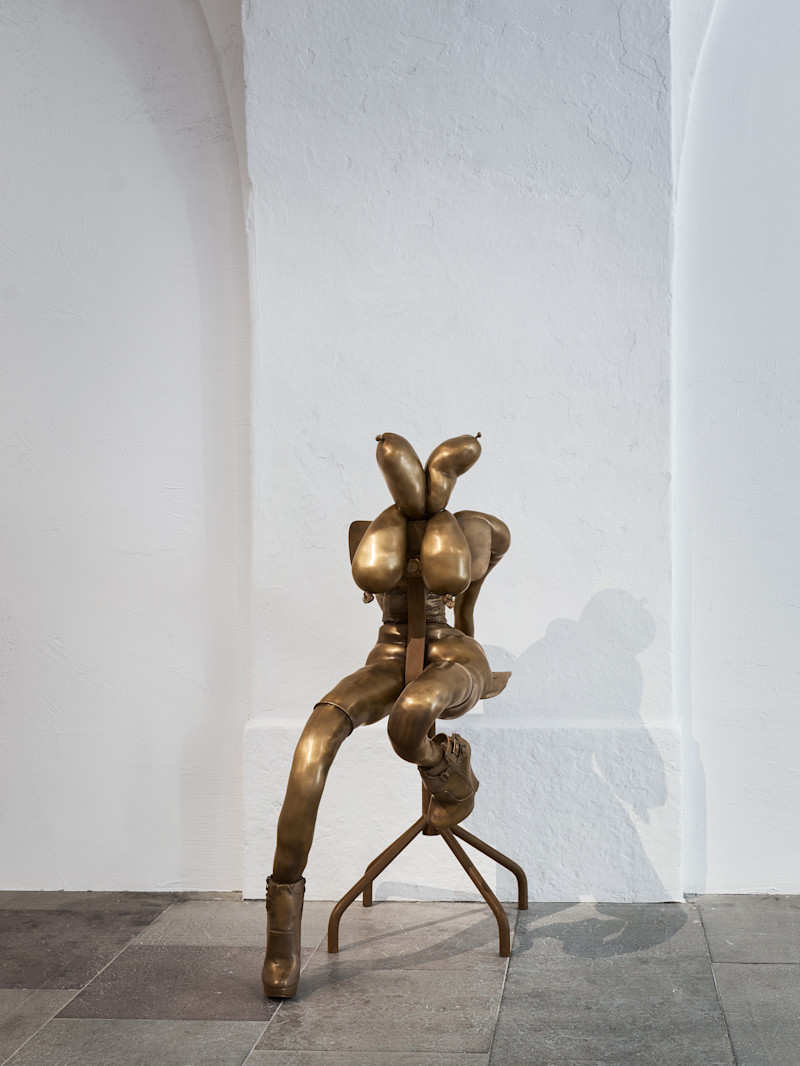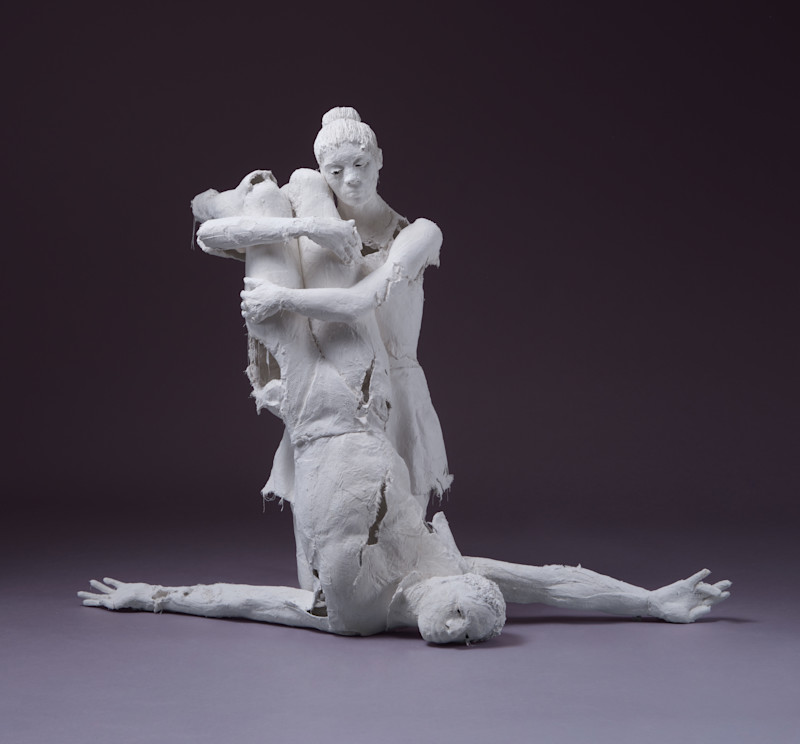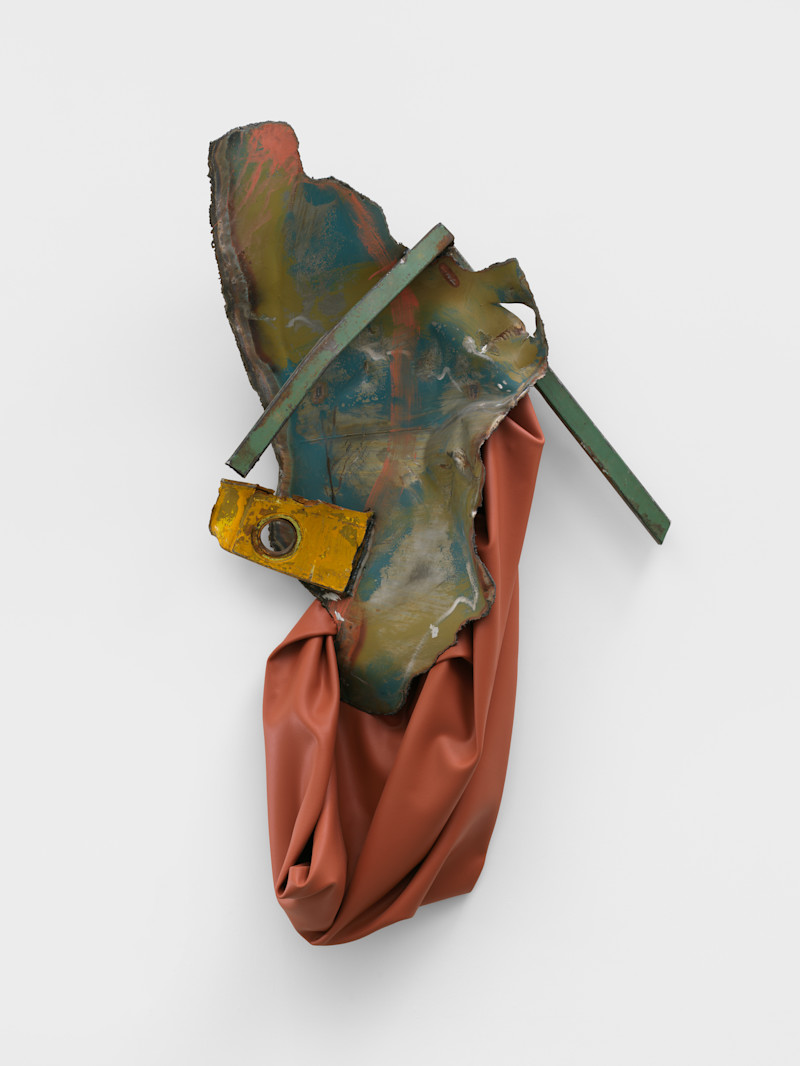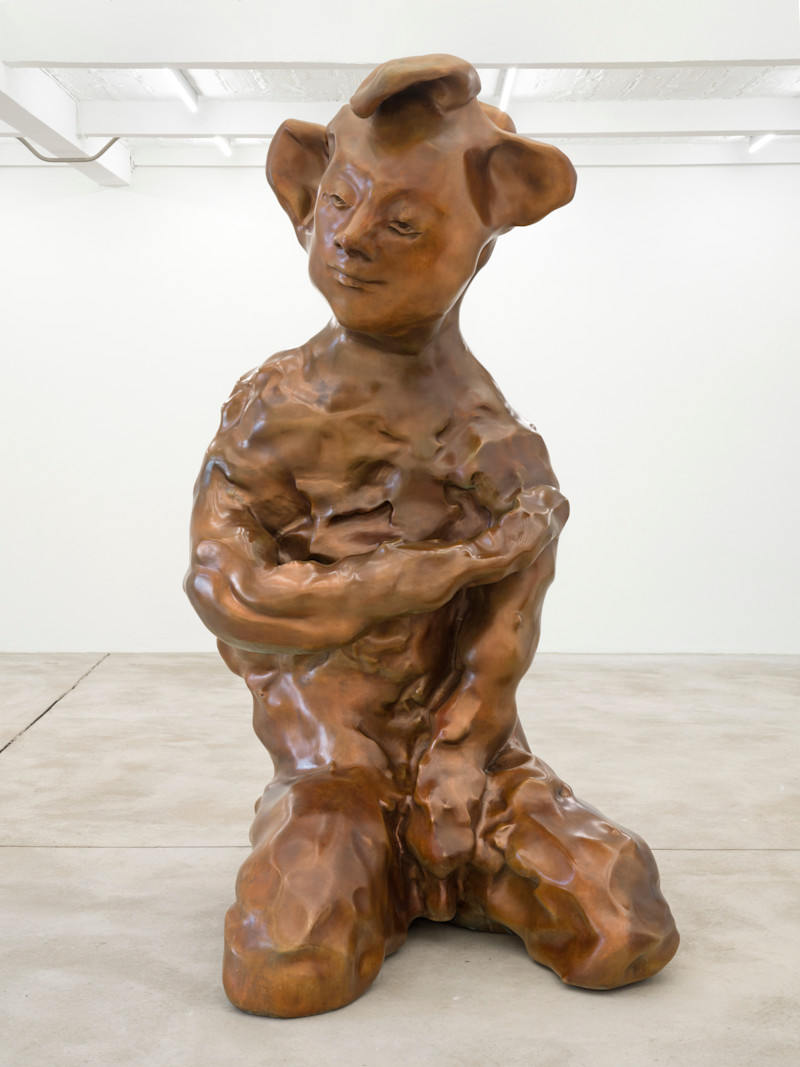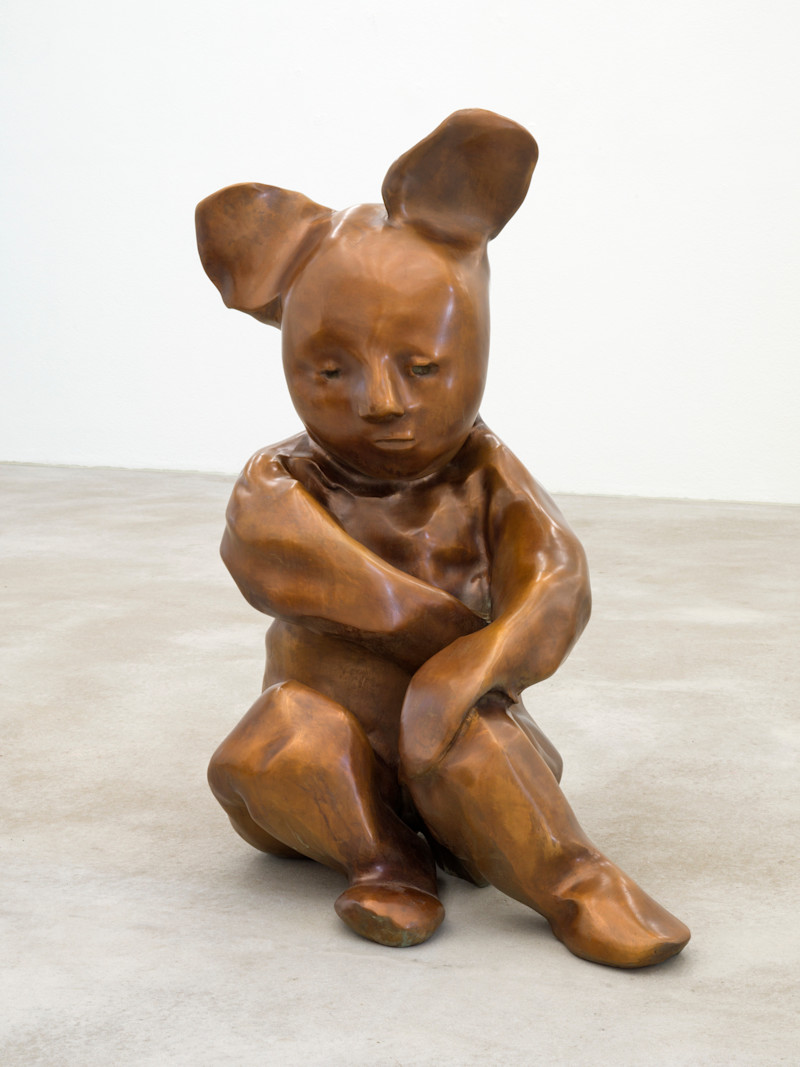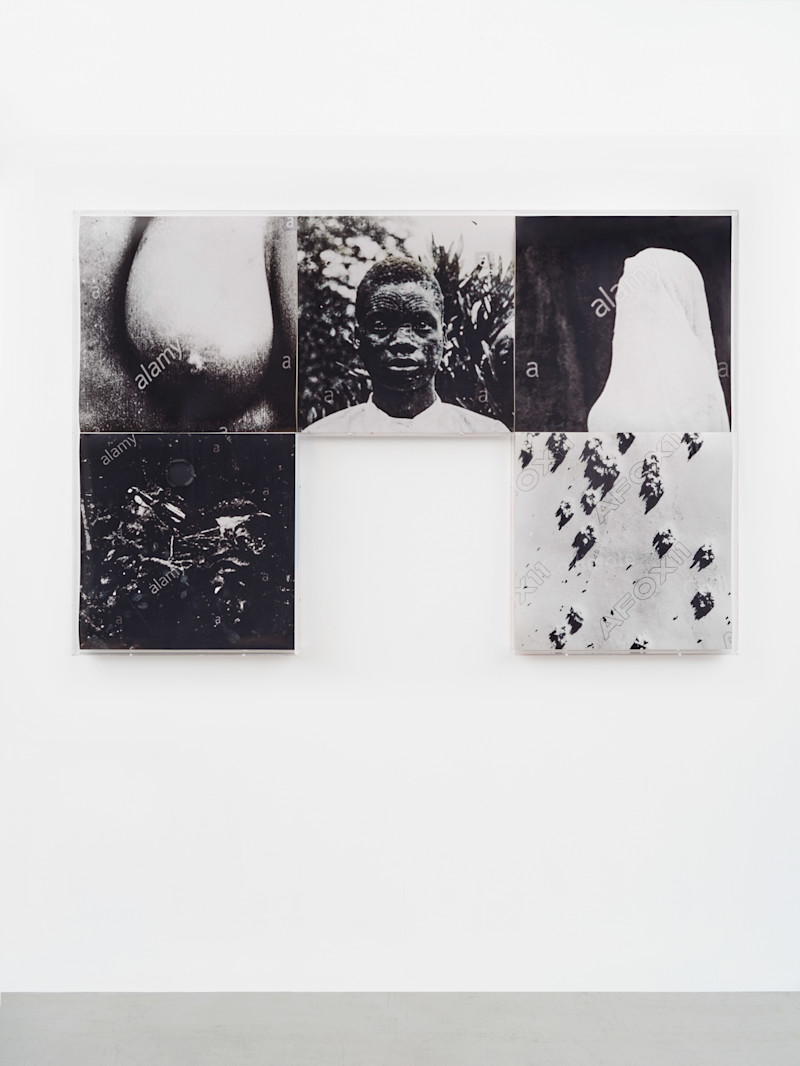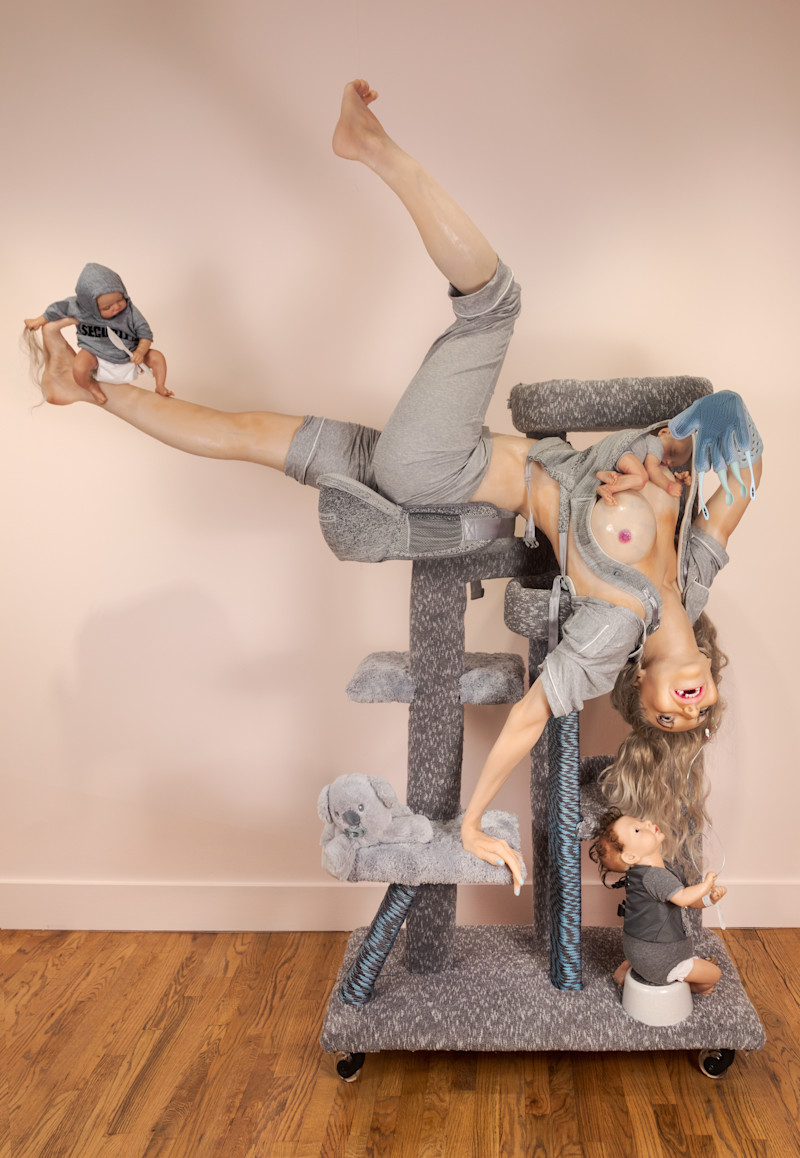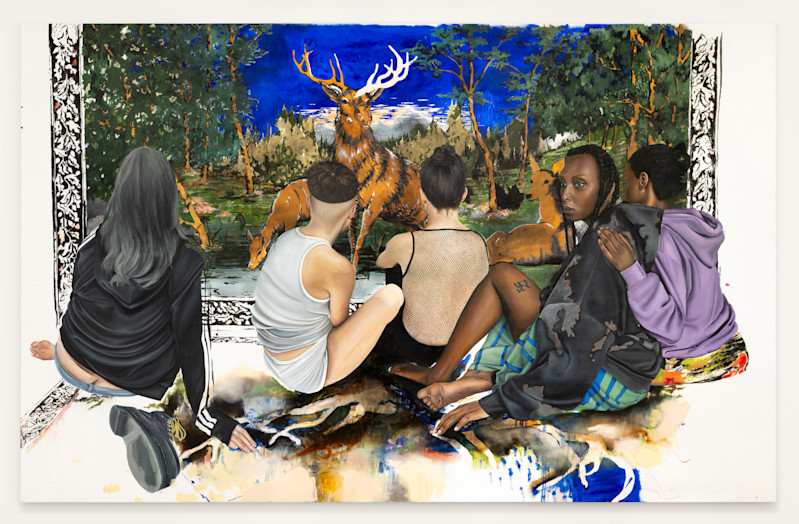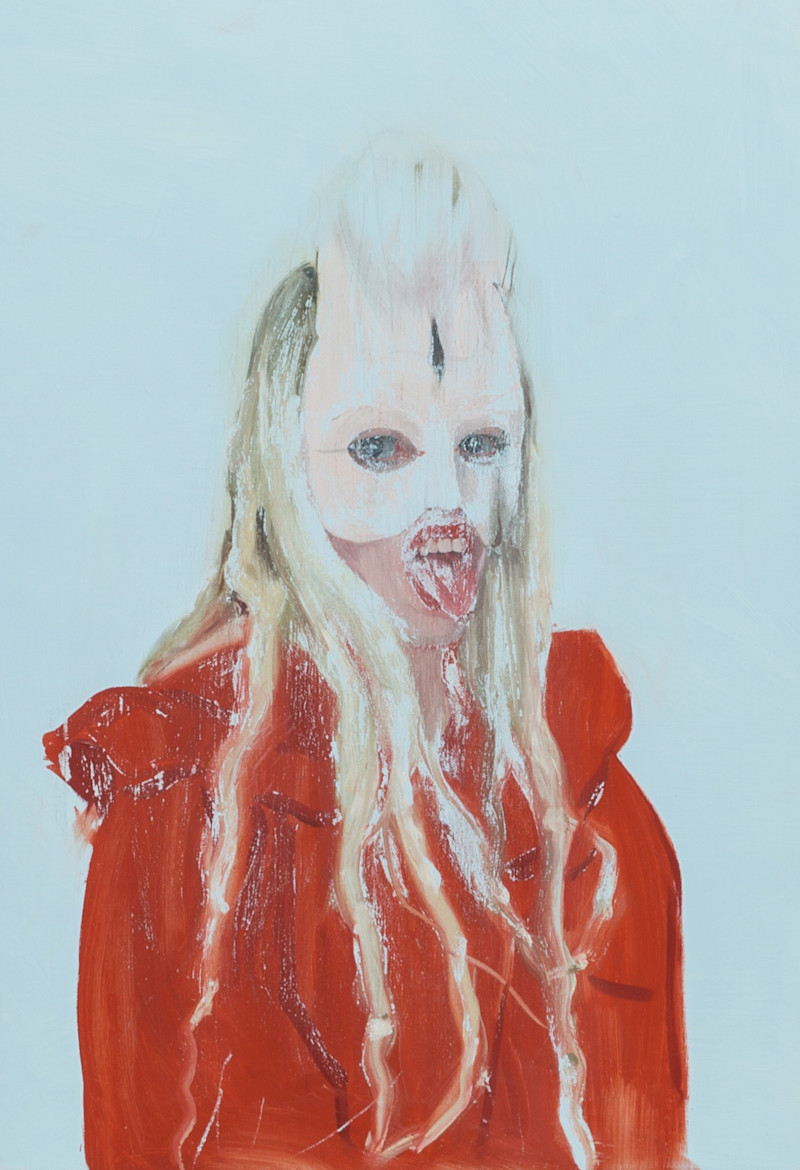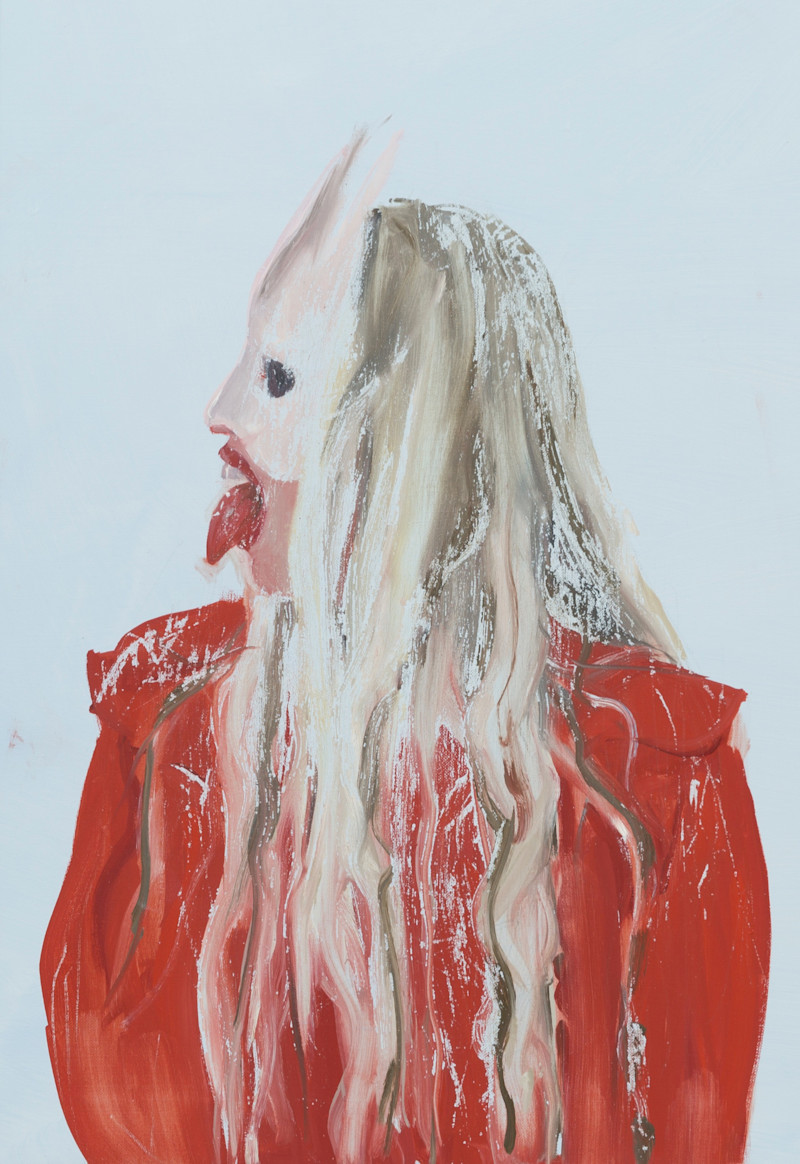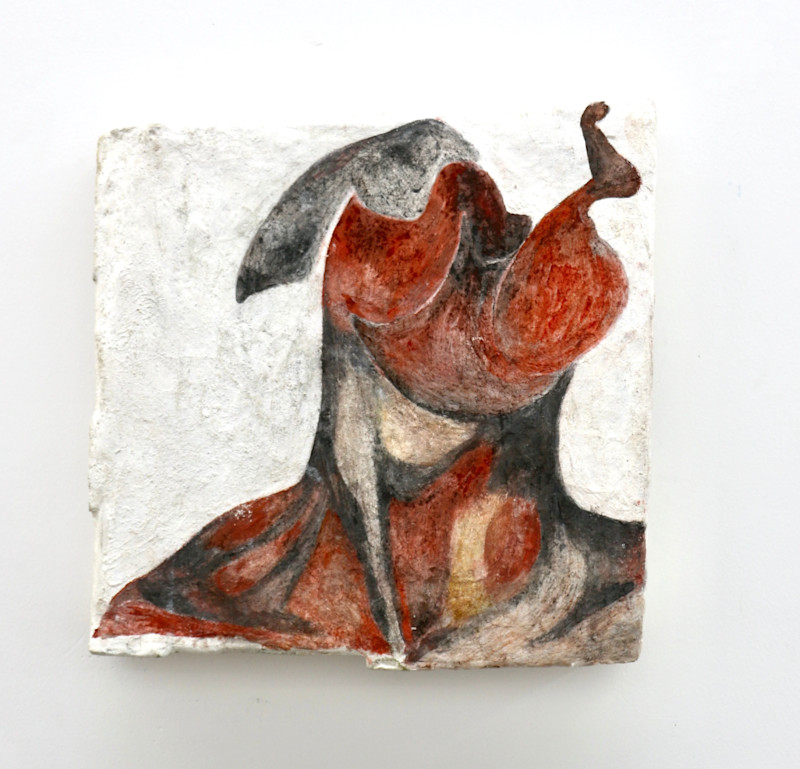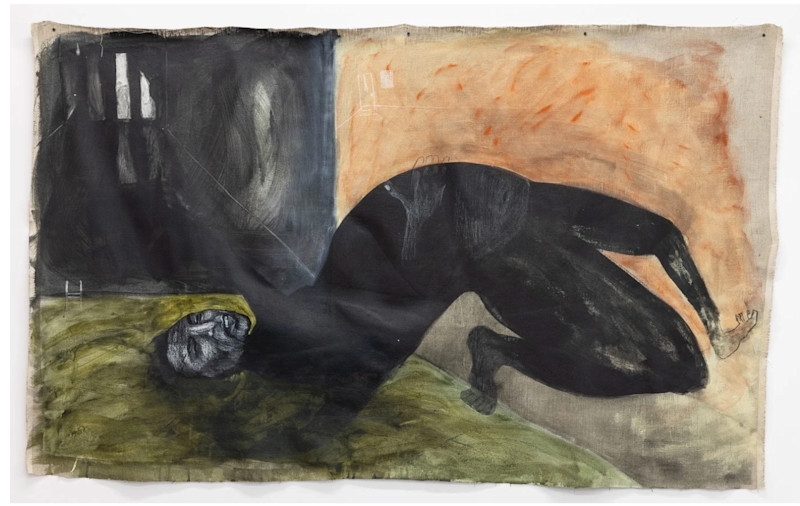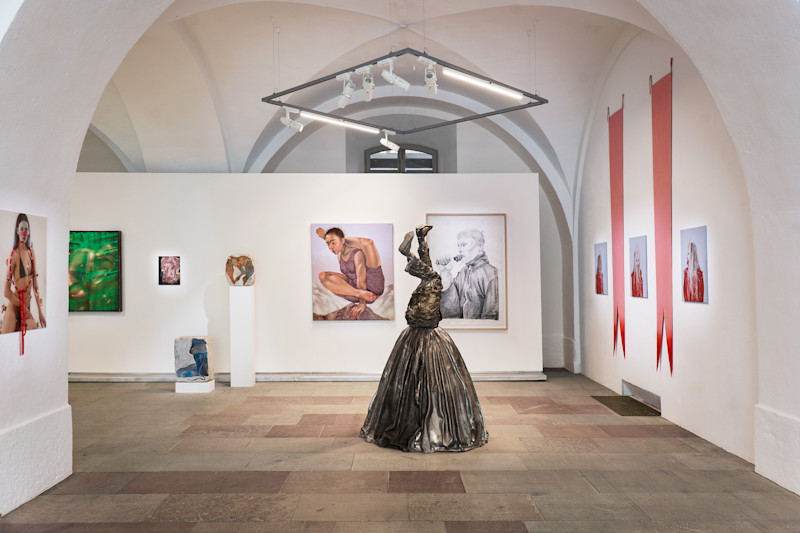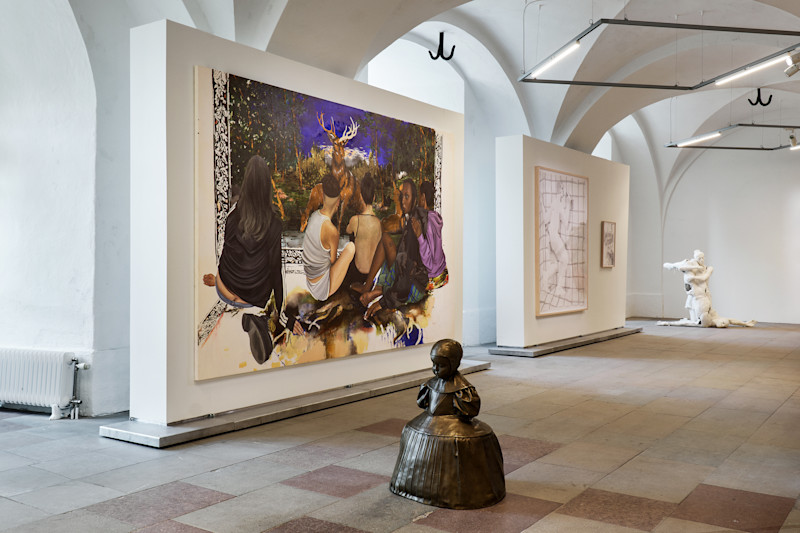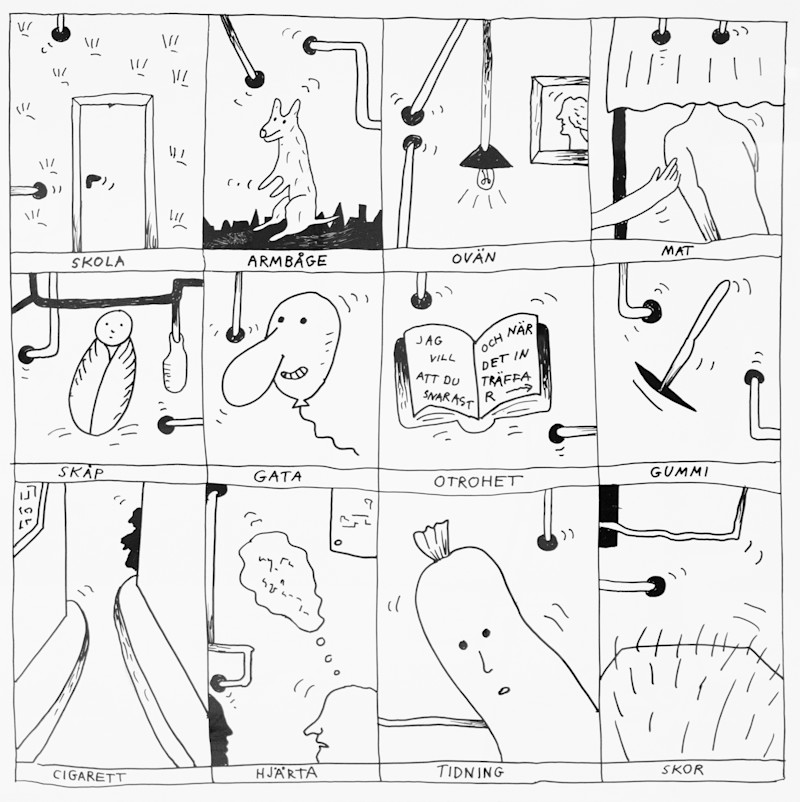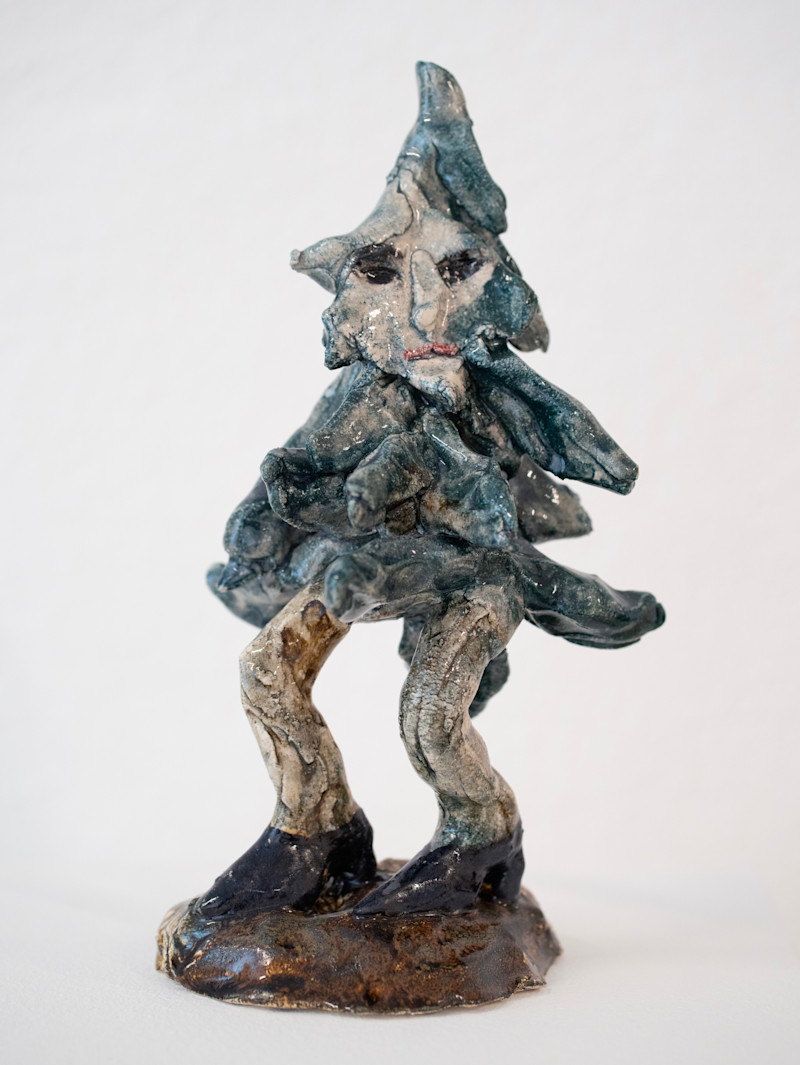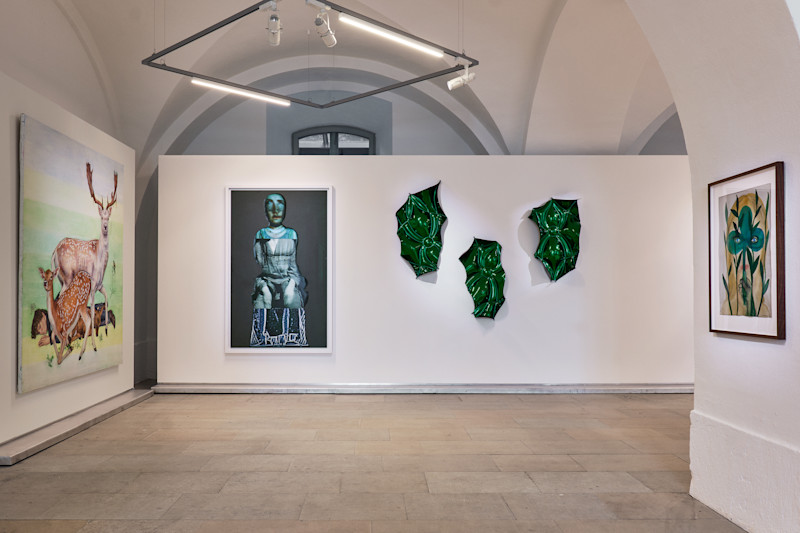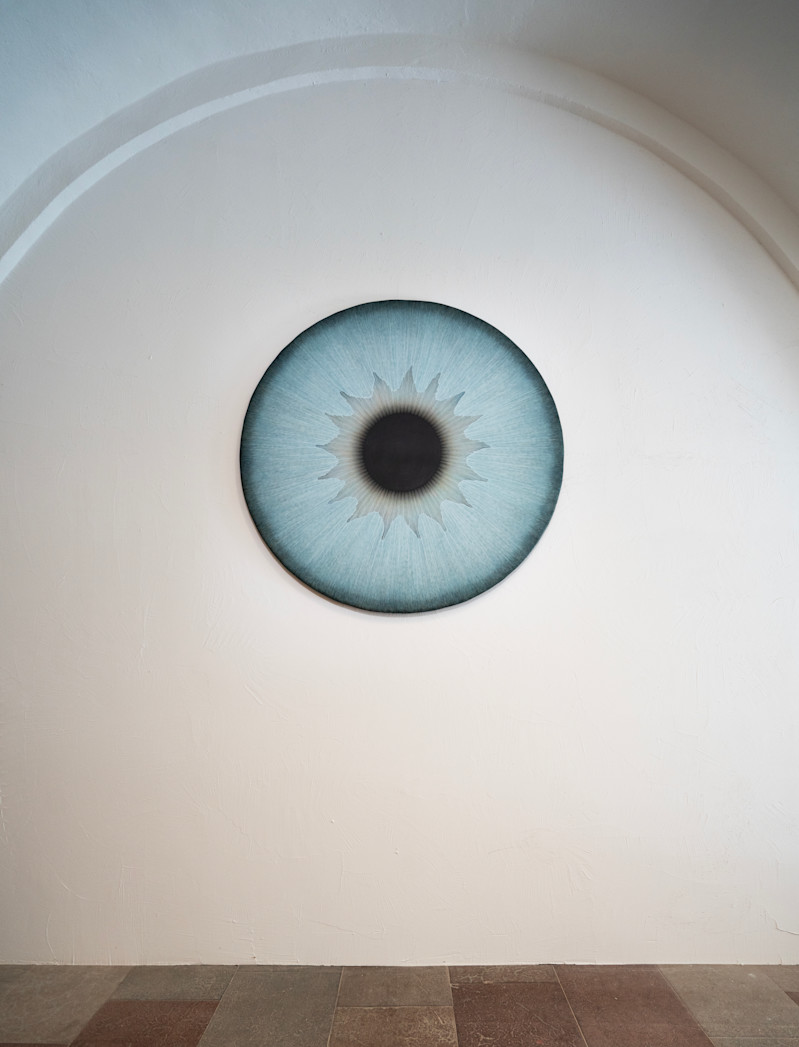About
We are proud to present group exhibition Gazing Bodies, inaugurating our beautiful new space in the East Pavilion of Armémuseum. It features some of our most beloved international superstars together with Swedish luminaries in contemporary art – Shadi Al-Atallah, Karin Mamma Andersson, Arvida Byström, Karon Davis, Marie-Louise Ekman, Leyla Faye, Charlotte Gyllenhammar, Edith Hammar, Hanna Hansdotter, Melanie Kitti, Klara Kristalova, Sarah Lucas, Martina Müntzing,
Frida Orupabo, Ylva Snöfrid, Paloma Varga Weisz, Ulla Wiggen, Kennedy Yanko, Cajsa von Zeipel, Ji Zou, Christine Ödlund, and Sixten Sandra Österberg. Thematically, it looks beyond the meaning of artworks, instead creating space for them as multifaceted beings, highlighting their desires and influence over viewers.
Curated by Caroline Wieckhorst, in collaboration with writer Lo Hallén, the exhibition was born out of an interest to explore the relationship between bodily artworks and the viewer via the concept of the gaze. It is a widespread term, primarily thanks to feminist film theory adopting it to explain how visual media reproduces societal power dynamics. Within film and other studies of visual culture, for example art history, the concept has been developed from this particular angle since Laura Mulvey wrote her seminal essay “Visual Pleasure and Narrative Cinema”.
Though incredibly important for art, film, and gender studies, this dominant use of the concept has also been criticized for steering away from, or overshadowing, an original, psychoanalytic meaning. Drawing from the later contributions of French psychoanalyst Jacques Lacan on the concept, one aspect of the gaze is tied to the limit of comprehension when observing something. It springs from the parts of materiality that are elusive to our ways of organizing the visual into language. Not getting the full picture, so to speak, emphasizes the subjectivity in the act of viewing, which triggers both feelings of identification and uncertainty. In relation to artworks, then, it is intriguing to phrase the gaze as a lack in the viewer, mirrored as an indefinable excess hiding in the piece, provoking a role reversal.
In Gazing Bodies, this elusive quality in art, capable of luring in beholders, is amplified by showcasing works reminiscent of or depicting bodies, with qualities such as plasticity, eeriness, and relatability. Motifs we initially mirror ourselves in, only to discover that they go way beyond mere reflections. They are entities of their own, with agencies and desires. Artworks suddenly seem to know more about us and the real world than we do, as if they have an objective gaze meeting our subjective one. We, who derive so much of our identity from the immaterial sphere of norms, language, symbols, versus them, anchored in a perfect interlacement of matter and idea, the actual meeting point of nature and culture.
We want to thank the incredible artists of the show, who create unique beings gazing back at us, reminding us of both our potential and our flaws – turning the very human quality of being simultaneously impossibly real and totally made up on its head.

